Pine – a wondrous resource!
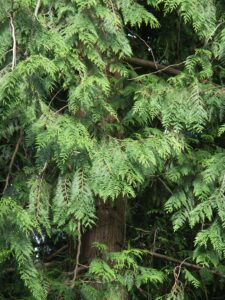
Here are a few points for using coniferous pine type woods:
Weight
All of the modern softwoods are lighter in weight than most hardwoods domestically grown. Now I am talking about timbers growing in temperate zones. That means that they are lighter to fell, convert, season and dry. That generally has led to lower costs too, hence the lower price of dimensioned lumber in the store. We often rely on softwoods for secondary work, which today and for two centuries has meant work above and below stairs. In the domestic quarters of the house, those parts seldom seen by guests, pine provided workstations and cupboards, worktables, benches and so on. The front entertaining rooms saw an increased use of more attractive woods both domestically grown hardwoods such as walnut, oak, cherry, elm and many imported exotics ranging from mahoganies to rosewood, ebony and others from around the world.
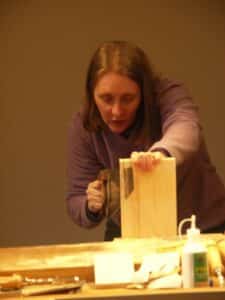
Strength
Many pines and especially spruce have the greater strength-to-weight ratio and indeed are so light they advantage many aspects of work. This we could say to be important in the construction realms of our work say on larger projects requiring lighter weight components, but there are other uses too.

Spruce is commonly referred to as a tone wood and is used extensively in instrument making, for the front plates on violins and guitars especially. Though tone is its primary value, the pressure on a steel stringed guitar, violin and cello is quite staggering, especially under aggressive aspects of playing.
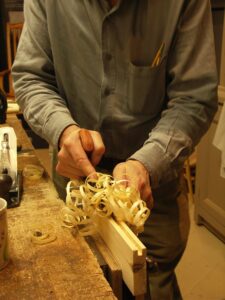
I cannot recall any of the craftsmen I knew using anything but pine for their tool boxes and it wasn’t just cheapness of materials but weight to strength practicality they sought. On my tool chests I have always used pine. Perhaps when I take forced retirement I will make a fancy mahogany one in which to lay my tools down in. Until then, I would rather lug a pine one around than a heavier one from oak.
Softness
Probably not considered a value but indeed it is. Pines are often soft and absorbing. They cushion many aspects of life and are especially pleasing for shelving, linings and so on. I love softer woods like this for my tools to rest in.
Pine is and always has been a sustainable wood
I also like the way pine works with hand tools (and machines); the lovely smells, the softness and the ribbons of fine shavings from the closely grained wood. Some of course have extremely hard aspects to their substance such as Longleaf pine’s extremely hard late growth rings. Of course as a protected species no one uses none commercially grown wood except wood bought from second hand wood suppliers, but not many pines exceed the density and hardness of this species. What a wonderful wood and what a sad loss to the world of woodworking through man’s greed and carelessness. Knots in pines too can be extremely hard and especially so in Spruce. I usually cut around them when I can.
Appearance
Because of what we did to pine we often look upon it with disdain. Sad really. Raiding and stripping the forest of its prime growth trees, removing dense canopy, force growing new hybrids has indeed led to more sterile grain with lifeless blandness, but that’s who we have become as we allow our lives to be taken into the industrialised wastes. To be candid, we need to rethink the things we have been absorbed unwittingly into. Mass making stuff because things are cheaper often have a way of biting back five and ten generations later on. But that’s not the reason not to do what we do. We should simply care about the how of life. That then determines the outcome—good or bad.
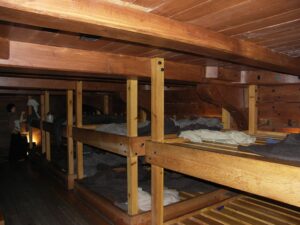
Conclusion
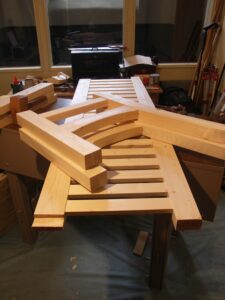
Love your wood!


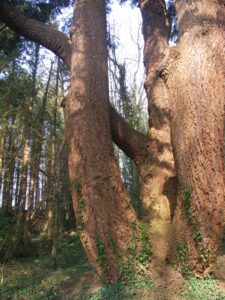

Thanks for this reflection, Paul. Pines are also some of my favorite woods to work. Just yesterday I was planing down some old pine window frames that I was fitting into a new wall in my shed. It was beautiful, clear, straight-grained pine with very close-set rings. If they are as old as I think they are (WWI-era), they just might be longleaf. It was beautiful stuff to work, to be sure. I didn’t want to stop taking shavings.
Longleaf was lovely. Just lovely. When I return to the US next week I will be on the lookout for some. I’d like a bench and tool box made from Longleaf for my classes in the USA. We start training next week and I am looking forward to that.
Good post Paul I think maybe folk look down on softwoods in general because their experience is of dense ranks of plantation forestry and very fast grown timber. Surprisingly few folk know that in hardwood fast grown is stronger whereas in softwood slowgrown is stronger. I am just doing some building work on a 1960’s building, my dad is helping me and I commented on how nice the old slow grown pine was co pared to that typically available today. He pointed out that he was a building contractor at the time this building was built and that they used to say just the same comparing it to gorgeous old super slow grown pine used in Victorian buildings.
being a Texan and living amoug the tall pines all my life it is my favorite wood. Hard to work some time but always worth the effort.
And yes, I love the smell.
I have noticed something strange to some pine I have had for maybe 2 years in the shop. When first I got it it was cream-yellowish (ponderosa pine), even after hand planing it. But right now it looks very different, it is very white, and super shiny. It is really amazing. Do you know why this happened? is it normal? It evolved into a superior thing really.
Thanks Paul. Even though it was a favorite of the Shakers, I was one of those wondering about your preference for Pine.
One point, though, is that I am pretty sure your lead picture is of Western redcedar (Thuja plicata), and is definitely not a pine. Another softwood, it, of course, is/was the Tree of Life for Northwest First Nations.
Paul, the story of Taylor’s pallet guitar might interest you and Joseph: * http://www.guitaradventures.com/taylor-pallet-guitar-story
* http://www.guitarsite.com/hotlicks/about3794.html